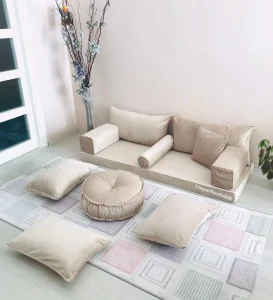The Best Roofing Ideas For Your Home

homeowners looking to reroof their homes may consider the materials that will best protect against heat, wind and precipitation as they choose a new roof material. Aesthetics will likely play a factor when making this choice as well as energy efficiency.
Clay or concrete tile roofs can last for over 100 years and offer resistance against fire, wind and hailstorms. Their heavy weight requires additional framing support during installation.
1. Roll Roofing
Roll roofing is an economical and straightforward option that makes installation easy, making it perfect for low-pitch roof structures such as gazebos, sheds and garages – as well as temporary structures such as event tents or construction site offices.
Roll roofing is lighter and easier to transport than asphalt shingles, meaning no special machinery will be necessary to reach the roof. A friend will still help lift and place it.
Roll roofing may not meet the durability requirements for home inspection or future buyer expectations of your property, and is therefore advised against. Speak to a roofing expert about its pros and cons before making your final decision.
2. Slate
Slate roofs can make an elegant statement when properly installed and boast striking hues like black, green and burgundy hues. Not only are these materials extremely resilient – some installations of slate can last over 100 years when correctly laid – they’re also highly fire-retardant; an added benefit in areas prone to wildfires or airborne sparks from fireworks or nearby house fires.
At first glance, slate may seem to age beautifully with time. But it is important to keep in mind that slate is not an extremely lightweight material; therefore, structurally sound framing must be ensured in order to support its weight; additional construction costs could increase; maintenance specialized services may also be necessary; it can also be fragile when not handled appropriately, potentially becoming an issue if satellite or cable dishes will be mounted onto your roof.
3. Copper
Copper roofing has become an increasingly popular choice for homes and commercial buildings alike. A natural material, copper starts off shiny penny color before developing an appealing blue-green patina over time that adds charm to any building and increases resale value. Plus, being fully sustainable metal, it is both durable and energy efficient!
Copper’s malleability makes it ideal for craftspeople to form into unique shapes for roofs and architectural features, making it durable against weather conditions, such as acid rain, pollution, mildew growth and other factors that might compromise other roofing materials. It can even withstand acid rain that might otherwise corrode other materials used on rooftops!
Copper roofs add warmth and elegance to any home from traditional to contemporary. If you are considering copper for your roof, make sure you obtain quotes from three to four contractors in order to find the most competitive pricing with quality installation services.
4. Wood
Wood shingles and shakes provide homes with a natural aesthetic while remaining durable and energy efficient. Wooden roofing keeps homes cooler in summer while keeping warm during the winter. Furthermore, they protect from harmful UV rays.
Wood roofs are an excellent choice for areas prone to heavy rain and storms, as they provide excellent wind damage resistance and debris impact protection. Spray-on fire retardants or pressure treatments may further enhance wood’s ability to withstand damage while meeting building codes in fire-prone regions.
Wood roofing materials still pose threats like rot or attract insects like termites, wasps and carpenter bees; thus requiring regular treatment. Furthermore, wooden materials can also be susceptible to water damage and require more frequent repairs than other roofing materials.
5. Thatch
Thatch roofing material brings rustic charm, exotic ambience or oasis-like comfort to any property – it’s especially ideal for historic cottages and other older structures.
Thatched roofs are environmentally-friendly. Their natural materials can be reused over and over, helping local communities thrive. Straw thatching relies on an elevated pitch (at least 50 degrees) so rainwater quickly drains off, acting as an excellent insulator by trapping heat or cold within its fibers.
The Thatch Company favors the classic block ridge pattern held down with wooden spars. We use winter wheat straw, as its strength gives us greater scope to craft organic shapes with it, as well as fitting roof structures which don’t conform to standard dimensions.





